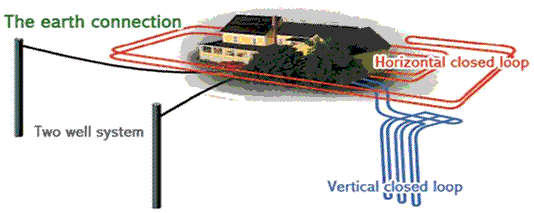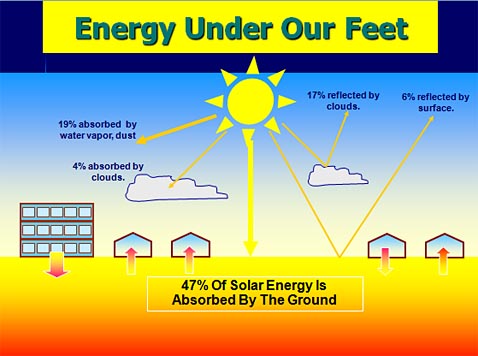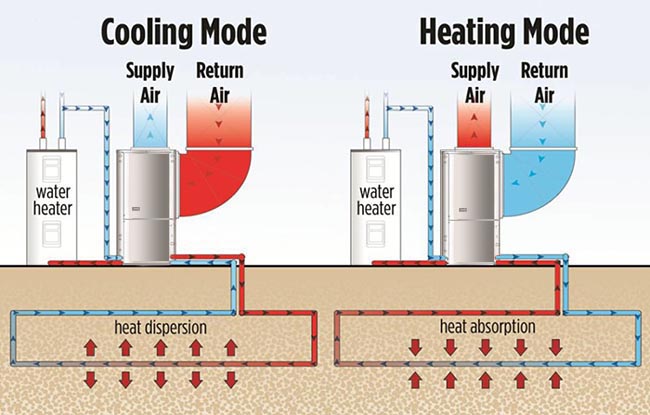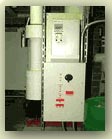What is Geothermal?
Return to previous page
The source of energy for Geothermal Heat Pump Systems is as old as the earth itself. This energy is not originally generated from any earthly source but from the sun. This thermal energy is stored just below the earth's surface and is estimated to exceed all other energy sources combined by more than two thousand times (2,000 x).
By tapping into the relatively constant temperature of the earth below the frost line, geothermal heats and cools your building at significant savings. The only energy used is the electricity to power the heat pump system.
To move energy from the ground to a building, or vice versa, a heat-transfer fluid is circulated within a network of collecting pipes in the earth. Energy is exchanged between the fluid and the building by means of a geothermal heat pump within the building.
During the winter, the system absorbs heat from the ground and uses it to warm the air in your home. In the warmer summer months, the process is reversed, taking heat from your home and transferring it back into the ground.
It's more efficient to use earth energy than it is to use a combustion furnace. That's because it requires less energy to move heat from one place to another than it does to convert one kind of energy into another, which is what a regular combustion furnace does.
Principal Components Include:
1. Earth connection subsystem
Using the Earth as a heat source in the winter and a heat sink in the summer, a series of pipes, commonly called a "loop," is buried in the ground near the building to be conditioned.
The loop can be buried either vertically or horizontally. It circulates a fluid (water in a well loop system or a non-freezing fluid in closed loops) that absorbs heat from, or relinquishes heat to, the surrounding soil, depending on whether the ambient air is colder or warmer than the soil.
Below is a typical vertical loop:

See how the sun and geothermal work together – Energy Under Our Feet
(View the demonstration)

For a demonstration on how this proven and simple technology works, click here
(Courtesy of Geothermal Heat Pump Consortium)
2. Heat pump subsystem
For heating, a geothermal heat pump removes the heat from the fluid in the Earth connection, concentrates it, and then transfers it to the building. For cooling, the process is reversed.

3. Heat distribution subsystem
 Conventional ductwork is generally used to distribute heated or cooled air from the geothermal heat pump throughout the building, particularly in homes. A hydronic radiant floor heating system can also be used for distribution by a geothermal heat pump.
Conventional ductwork is generally used to distribute heated or cooled air from the geothermal heat pump throughout the building, particularly in homes. A hydronic radiant floor heating system can also be used for distribution by a geothermal heat pump.
The image to the right is a typical indoor heat pump unit:
1Geothermal Heat Pump Consortium, GeoExchange Heating and Cooling Systems: Fascinating Facts





 Conventional ductwork is generally used to distribute heated or cooled air from the geothermal heat pump throughout the building, particularly in homes. A hydronic radiant floor heating system can also be used for distribution by a geothermal heat pump.
Conventional ductwork is generally used to distribute heated or cooled air from the geothermal heat pump throughout the building, particularly in homes. A hydronic radiant floor heating system can also be used for distribution by a geothermal heat pump.